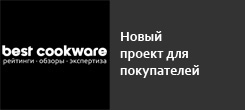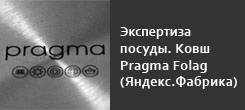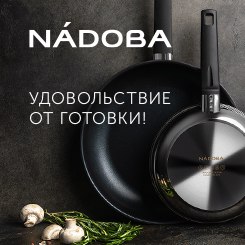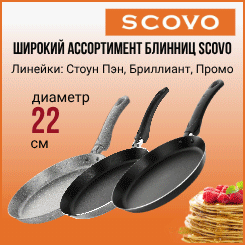| Вход | Регистрация | |
 |
ГЛАВНАЯ ¦ НОВОСТИ ¦ СТАТЬИ ¦ МОНИТОРИНГ ¦ СОБЫТИЯ ¦ РЕЙТИНГИ ¦ УГОЛОК ПОТРЕБИТЕЛЯ ¦ GUIDE
|
Ambiente 2011. Пост-релиз (eng).
Over 144,000 buyers at the world’s biggest trade-fair for the consumer-goods sector
Consumption increasing, the economy continues to expand – the consumer-goods industry expects sales growth in 2011.
The world’s biggest trade fair for the consumer-goods sector closed its doors on Tuesday, 15 February 2011, after having welcomed more than 144,000 trade visitors, an increase of almost ten percent over the previous edition (2010: 132.096[1]). “With a good 144,000 buyers from 150 countries, Ambiente 2011 has exceeded all expectations. This is an excellent achievement for the world’s most important consumer-goods fair. The big increase in visitor numbers and the associated high level of satisfaction on the exhibitor side indicate that the recovery is well advanced in Germany and the world market”, said Detlef Braun, Member of the Board of Management of Messe Frankfurt GmbH. During the fair from 11 to 15 February, 4,383 exhibitors from 86 countries (2010: 4.336[2]) presented an international range of products for the fields of tableware, kitchen, home, furnishing and giving.
Around 77,500 of visitors (2010: 71,716[3]) came from Germany, an increase of approx. eight percent. One in two of the buyers came from outside Germany so the level of internationality is now about 46 percent. After Germany, the top five visitor nations are Italy, The Netherlands, France, the USA and Switzerland.
The positive atmosphere in Germany, which was revealed by a survey conducted by the forsa social-research institute on behalf of Messe Frankfurt before the fair, was also evident at Ambiente. According to the survey, 90 percent of Germans are once again willing to spend more on quality and high-grade products. Thus, during his visit to the fair on Friday, Germany’s Minister of Economics, Rainer Brüderle, said that increasing wages were among the factors contributing to expansion in the German economy. “The Germans are taking a very optimistic view of the future and are therefore willing to spend more again”, said Brüderle. In this connection, Detlef Braun said, “The average sales increase of eight percent expected by the consumer-goods industry in 2011 seems thoroughly realistic.”
This optimistic view of the future is also taken by the exhibitors. “The economic upswing can be felt beyond the borders of Germany. The angst has evaporated and the propensity to consume has grown significantly”, said Bernd D. Ehrengart, General Manager of Lambert GmbH. “The number of visitors has been better than for many years. We are very pleased with our results, which are significantly up on last year’s”, was his positive summary of business at Ambiente.
Thorsten Klapproth, Chairman of the Board of Management of WMF AG, confirmed this: “For us, Ambiente is the world’s most important fair and it is important that the sector attends and meets there. We are also very pleased about the increased attention being paid on a political plane. The mood is good and forward-looking – in line with the consumption climate index. The trade is willing to risk new products. In particular, the specialist trade is bolder in respect of new themes, providing they are well presented.”
Peter Frischholz, General Manager, Association of the Ceramic Industry (Verband der Keramischen Industrie e.V.) also spoke of an “Upwards trend, which was already noticeable during the 2010 Christmas season and has been confirmed at Ambiente. From the first day on, there was a good and large number of visitors from both home and abroad in the halls and on the exhibitions stands. Overall, the mood at the fair was consumption oriented and we could sense that visitors are confident the economic upswing will continue. Thus, the fair was able to send out an important signal for more consumption in the future and the sector anticipates a further increase in sales this year.”
The positive economic situation is also reflected by a representative poll of exhibitors and visitors conducted by Messe Frankfurt during the fair. Last year, participants took a cautiously optimistic view of future developments. This year, the results are significantly better, especially for German exhibitors and visitors. Altogether, over 80 percent of all respondents consider the current economic situation to be satisfactory to good.
The survey also revealed a further increase in the overall level of exhibitor satisfaction with the event while, at 96 percent, visitor satisfaction can hardly be bettered. Accordingly, Thomas Grothkopp, General Manager of the German Association for Tableware, Housewares and Home Decor (Bundesverband für den Gedeckten Tisch, Hausrat und Wohnkultur e.V.) described Ambiente 2011 as having been “refreshing for trade visitors”. As he said, “With lots of new products and committed exhibitors, the fair continues to be a must for all retailers wanting to stand out from the crowd.”
The high visitor quality and, therefore, great decision-making authority was noticeable throughout the fair. “I can only second Mr. Brüderle when he said that successful companies and entrepreneurs meet in Frankfurt. There was a particularly large number of international visitors and this shows yet again that Ambiente accurately reflects the world market for the home, giving and dining, and is the meeting place for the whole sector”, added Heike Tscherwinka, General Manager of the European Lifestyle Association (Europäischer Verband Lifestyle – EVL).
“Business at Ambiente 2011 was excellent for our entire group. Generally speaking, the customers have been in the mood to place orders, and both our all-year range and the Christmas collection have been very well received. The number of visitors was very good and the proportion of international customers high, especially from other European countries”, said Hamid Yazdtschi, General Manager of Gilde Handwerk Macrander GmbH & Co KG.
Trends at Ambiente
Dining trends
Brands, quality, authenticity, functionality and sustainability are very much in demand. In the porcelain and ceramic segment, authenticity is reflected by products that include ‘old’ elements in their shape or decoration. White crockery is decorated with relief motifs or with delicate colours, especially blue. Alongside such products are articles distinguished by bright and rich decorative colours. Drinking glasses are functional and classic, although more and more exhibitors are experimenting with unusual shapes. In the kitchen, colourful accents are to be found on accessories, small electrical appliances and knives. The ‘in’ colours are lime, berry, violet, orange and yellow. Also to be seen in the case of plastic products are transparent shades, such as blue, green, lilac, and natural colours, such as brown, beige and cappuccino. On certain exhibition stands, visitors could also find products made of renewable raw materials, which can be composted and thus meet the demand for ecological goods.
Living trends
The recipe for success in the home and furnishing segment is consistency with lots of room for individualism. Consumers are developing a powerful desire for concentration – they want to find favourite pieces and thus create their own individual style. This goes hand in hand with a rekindled interest in branded products and high-quality trademarks. Resource conservation and production transparency are decisive arguments in the consumer’s decision-making process. In the case of home accessories, there are signs of an increased attachment to products made in Germany. Locally produced using domestic wood, cuckoo clocks and walking sticks are making a comeback. The charm of the fifties is blowing through Germany’s living rooms. Chairs and tables reflect the designs of that epoch. When it comes to decor, nature is still the key factor. Nevertheless, works of art, especially paintings and sculptures, are gaining in popularity as decorative elements for the home. The range of colours is broader than for many years with pastel shades from rosé to lime green being particularly popular. Decorations for Easter 2011 will be less elaborate with rabbits and chicks in a pared-down design language or made of rough, untreated wood fitting in with a purer style for the home.
Giving trends
When it comes to creative ideas for gifts, the trend is towards sustainable products suitable for personalisation and unique, high-quality items. Plastic, tarpaulins, parachute silk and woollen blankets are made into individual bags, cases or purses of all sizes. And consumers wanting sustainability but not of the recycled kind look to natural materials, such as felt, leather and bamboo. Objects that bring order into everyday life, such as key rings, mobile-phone cases, cups and notepads, are available in all colours of the rainbow, in accordance with individual preferences. There is something for all tastes in the jewellery world, too, with system collections of rings, chains, watches and earrings giving the consumer the opportunity to make changes to his or her heart’s content.
Ambiente 2012 will be held from 10 to 14 February.








